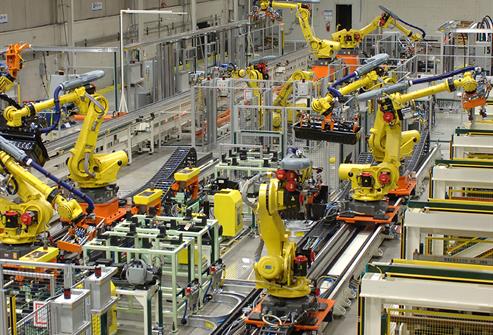The manufacturing industry has been undergoing a remarkable transformation in recent years, driven by advancements in technology and a relentless pursuit of efficiency and productivity. One area where these changes are particularly evident is in assembly line designers. From the early days of Henry Ford’s groundbreaking assembly line to the present, assembly lines have evolved significantly, and they continue to shape the future of manufacturing. In this article, we will explore some of the most exciting innovations in assembly line design that are revolutionizing the way products are made.
Robotic Automation
One of the most significant innovations in assembly line design is the widespread adoption of robotic automation. Robots are now capable of performing a wide range of tasks, from welding and painting to precision assembly. These robots are highly efficient and can work around the clock without tiring, leading to increased production speeds and consistent quality.
Collaborative Robots (Cobots)
While traditional industrial robots often work in isolation, collaborative robots, or cobots, are designed to work alongside human operators. Cobots are equipped with advanced sensors and safety features, allowing them to operate safely in close proximity to humans. This innovation has opened up new possibilities for flexible assembly lines where humans and robots can collaborate seamlessly.
3D Printing
3D printing has revolutionized the way prototypes and custom parts are produced. In assembly line design, 3D printing allows for the creation of highly specialized components quickly and cost-effectively. This technology is particularly valuable in industries like aerospace and healthcare, where precision and customization are paramount.
Internet of Things (IoT) Integration
The integration of IoT devices and sensors into assembly lines has enabled manufacturers to collect real-time data on equipment performance, product quality, and supply chain logistics. This data-driven approach allows for predictive maintenance, reducing downtime and optimizing production schedules.
Artificial Intelligence (AI) and Machine Learning
AI and machine learning algorithms are being used to optimize assembly line operations. These technologies can analyze vast amounts of data to identify patterns and anomalies, helping manufacturers make data-driven decisions to improve efficiency and reduce waste.
Lean Manufacturing Principles
While not a new concept, the application of lean manufacturing principles to assembly line design continues to evolve. Lean principles focus on eliminating waste, reducing production times, and improving product quality. Many manufacturers are embracing lean methodologies to streamline their assembly processes and reduce costs.
Augmented Reality (AR) and Virtual Reality (VR)
AR and VR technologies are being used to train assembly line workers, assist in complex assembly tasks, and perform remote troubleshooting. These immersive technologies enhance worker skills and reduce errors, ultimately leading to higher productivity and lower training costs.
Sustainable Practices
As environmental concerns become more prominent, assembly line design is increasingly focused on sustainability. Manufacturers are incorporating eco-friendly materials, energy-efficient equipment, and waste reduction strategies into their assembly processes.
Conclusion
Innovations in assembly line designers are driving the future of manufacturing, making production processes more efficient, flexible, and sustainable. From the integration of robots and IoT devices to the use of AI and AR, these advancements are reshaping the manufacturing landscape. As technology continues to advance, we can expect even more exciting developments in assembly line design, further revolutionizing the way products are made and setting the stage for a more productive and sustainable future in manufacturing.



